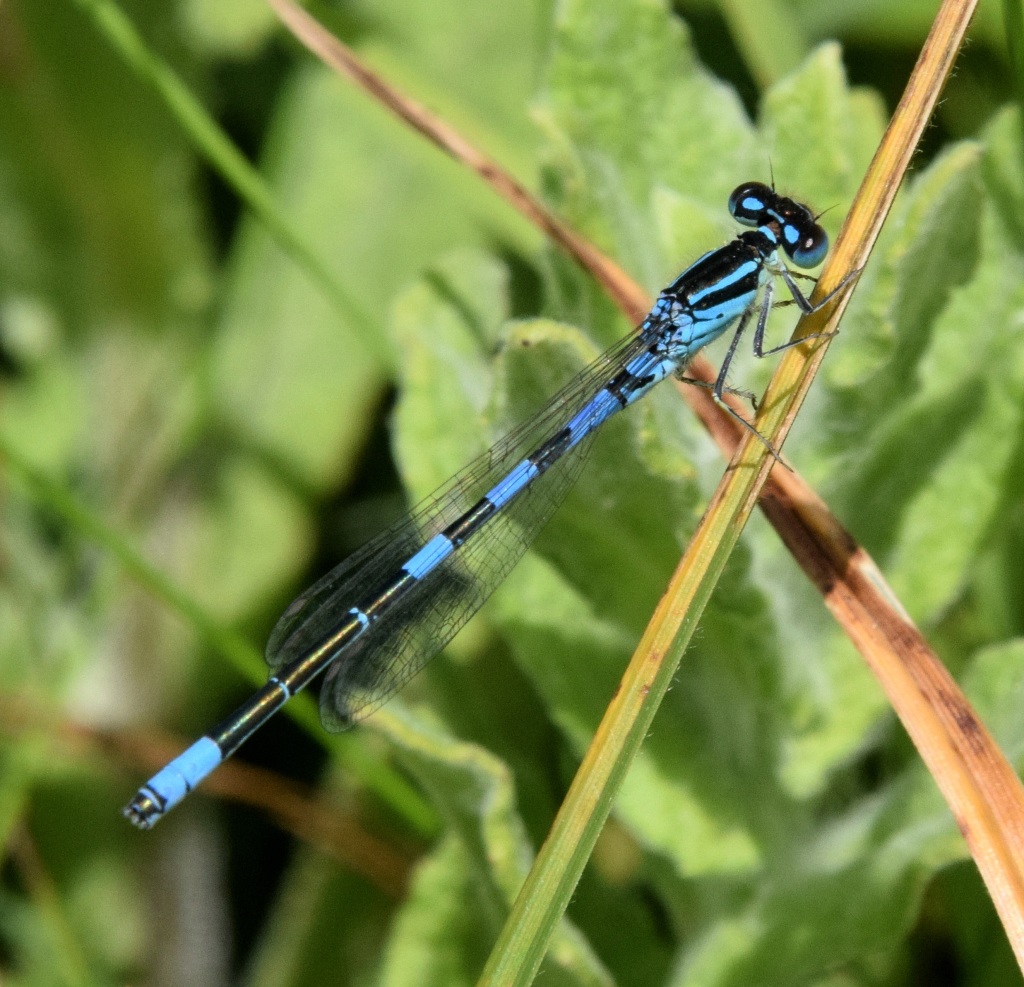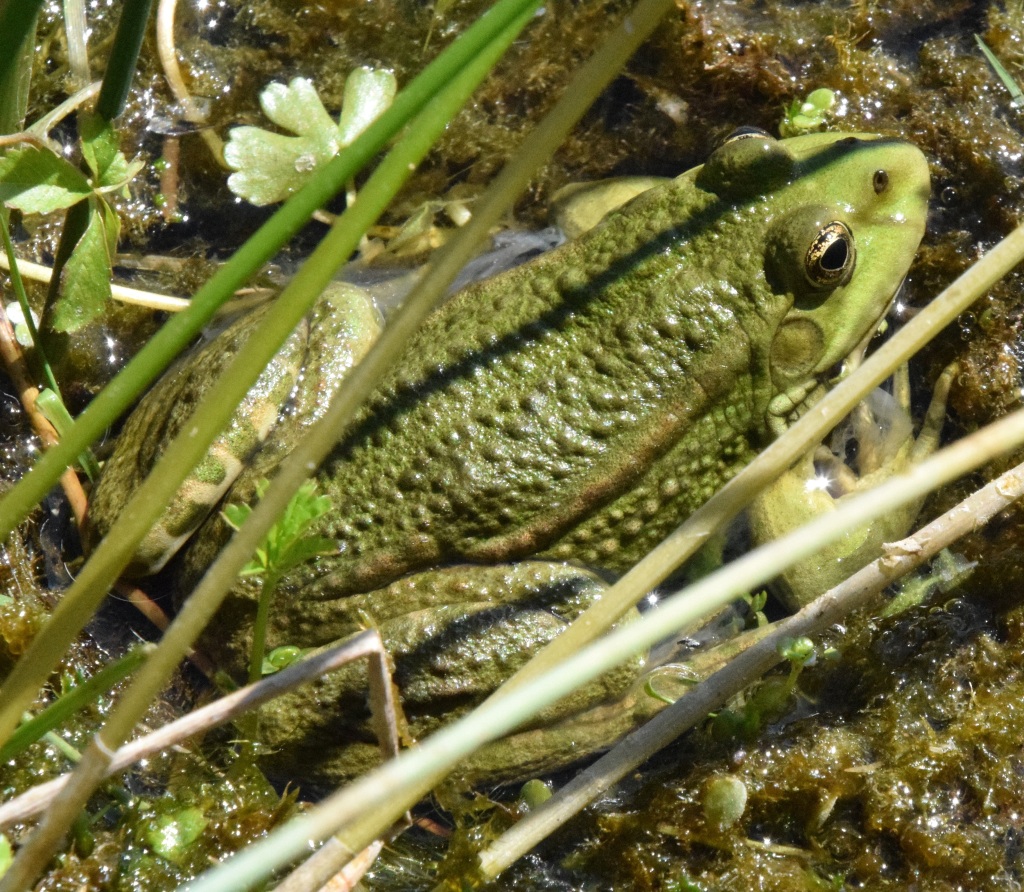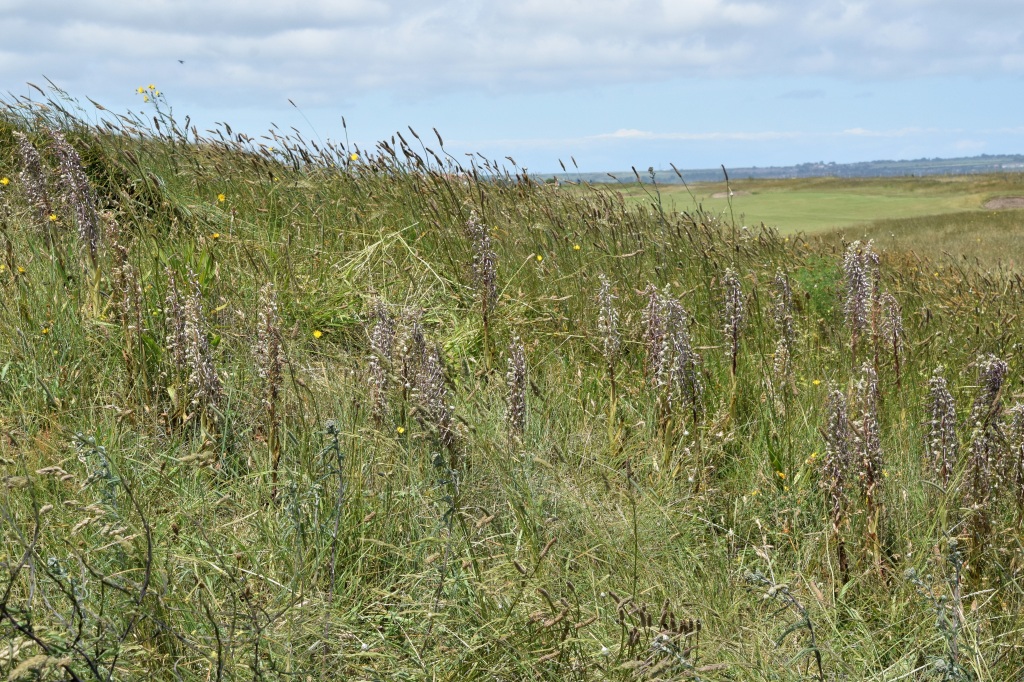Today’s plan had begun by wishing to top up my national Damselfly list, the prime target of this post being one of the more recent additions from the south to the British Odonata fauna. Now thriving, since just 14 individuals were re-discovered at today’s location in 2019 (see here) after a 70-year absence from the mainland, the scarcity can be observed at field meetings arranged by Sandwich Bay Bird Observatory. Having got around to booking onto one this season I alerted Adam who did the same and now we made a joint effort. We had each recorded every other national damselfly previously.
I had experienced Dainty Damselfly (or Bluet) before in Sardinia in June 2018. This species remains rather localised in its historic range from the northern Iberian peninsula eastward to Iran; and has made further inroads as far north as the dune coasts of Belgium, Holland and this corner of England. The Kent Wildlife Trust now offers annual field trips at another site, Oare Marshes near Faversham (see here), while more county locations are reputed. There was also a small colony on the Isle of Sheppey in 2010/11 that has since died out.
The Kent specialty (pictured above) exhibits similar jizz and flight style to Azure, Common Blue or Variable Damselflies amongst which it may occur, but males can appear slightly smaller and darker-toned. The following diagnostics separate Dainty from those more familiar others:
- Greenish yellow colouring on the underside
- Thin antehumeral stripes on the upper side of the thorax
- Pterostigma (wing tags) almost twice as long as they are wide
- “Wine-goblet” shaped marking on segment 2 in males below the wing base
- “Rocket-shaped” markings in females on the abdomen
We arrived at the Sandwich Bay Estate (CT13 9PF – TR350578), within which the bird observatory and field study centre is situated, just after 12pm; two and a half hours ahead of the field meeting. We couldn’t have wished for better weather conditions in which to convert our quest, the current week having provided three consecutive days of the golden orb for the first time in a while in this idiosyncratic English summer, that has been most recently characterised by cold northerly June winds on top of the endless wet stuff. Things thus certainly seemed meant today!
I hoped for and also interested Adam in the opportunity to observe a third new amphibian for my current season, while this location is further noted for the profusion of Lizard Orchids that populate it’s golf courses. Volunteers on site assured us that both those aims would be attainable before the main business began, but more of that later.
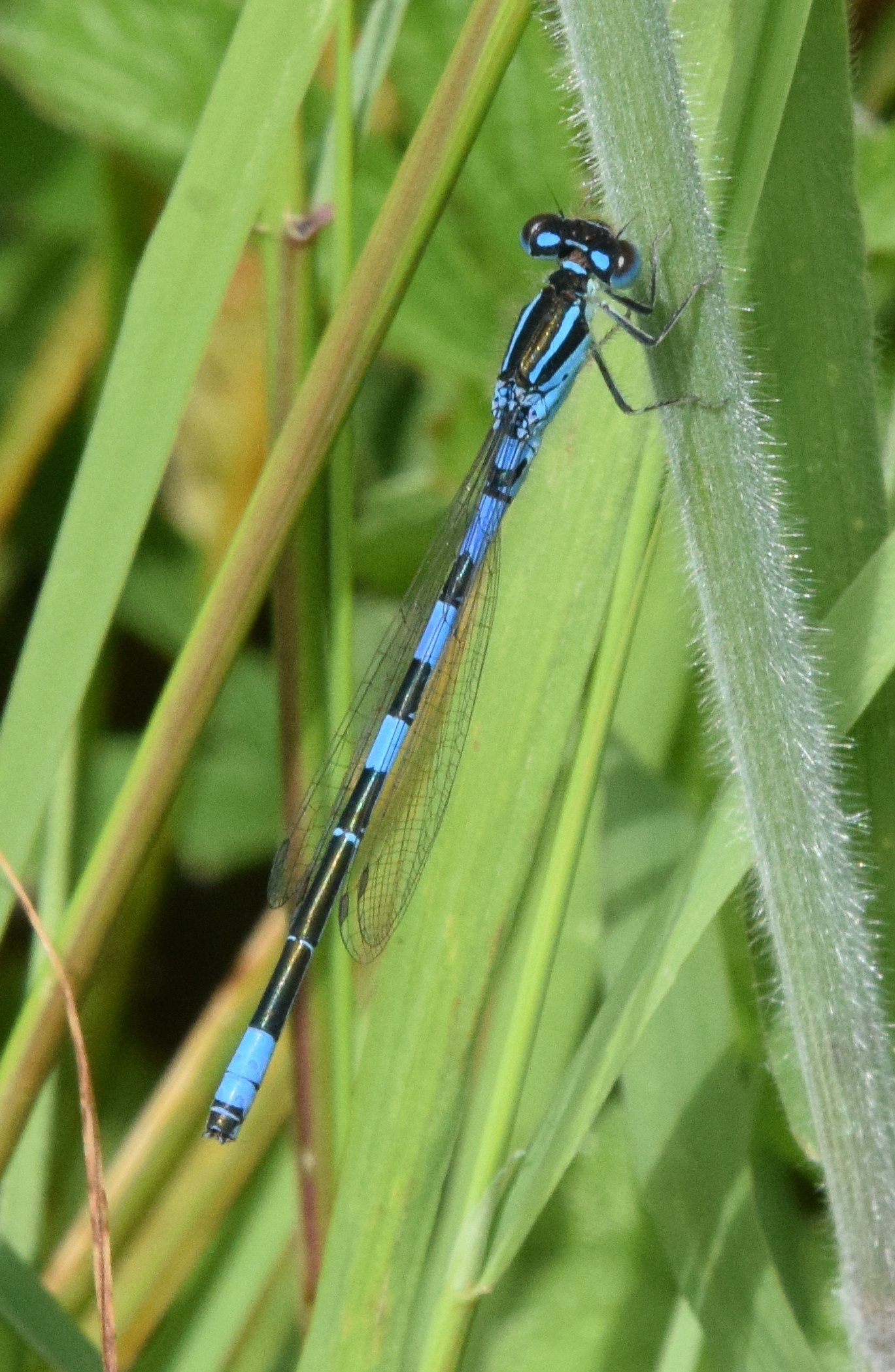
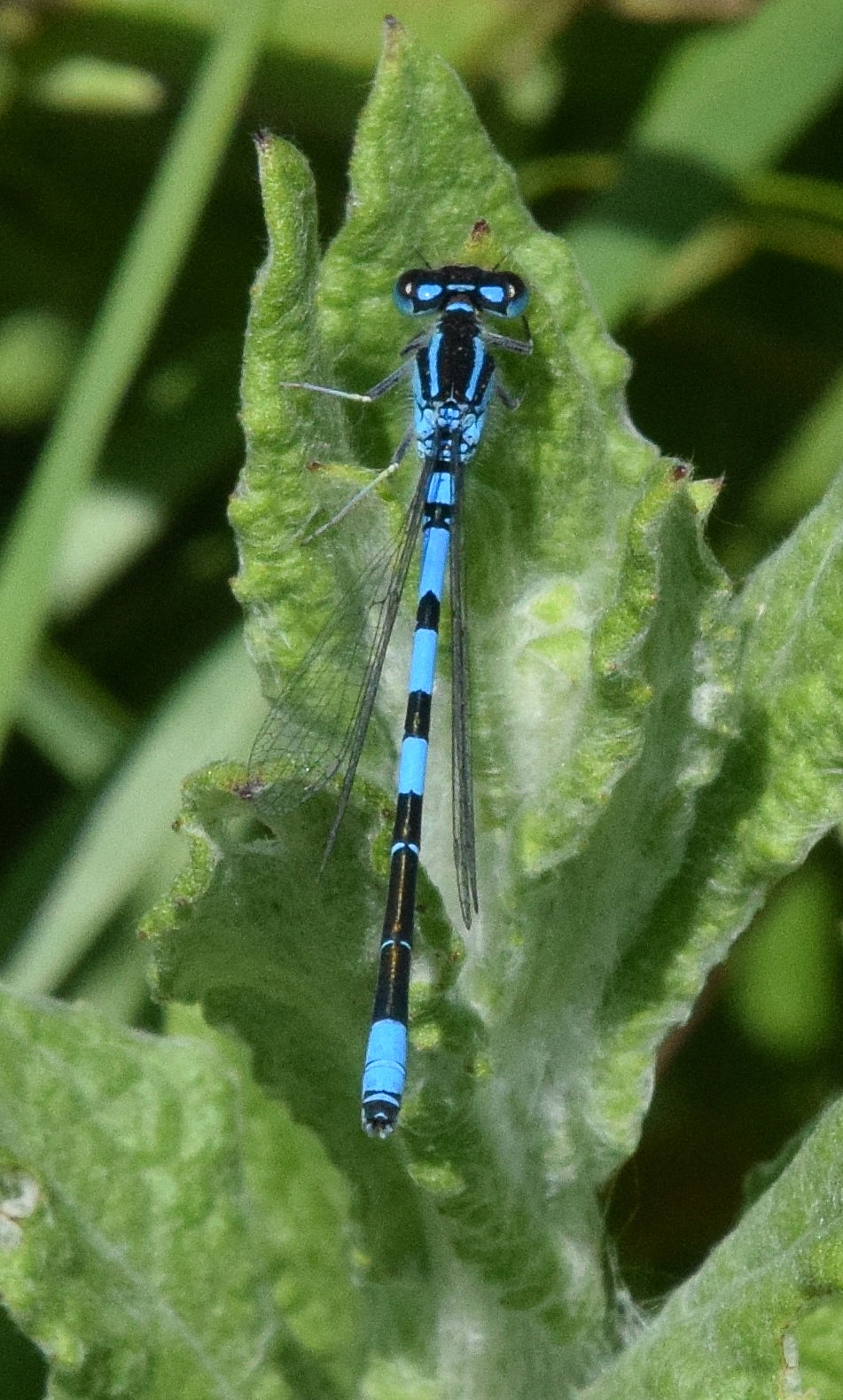
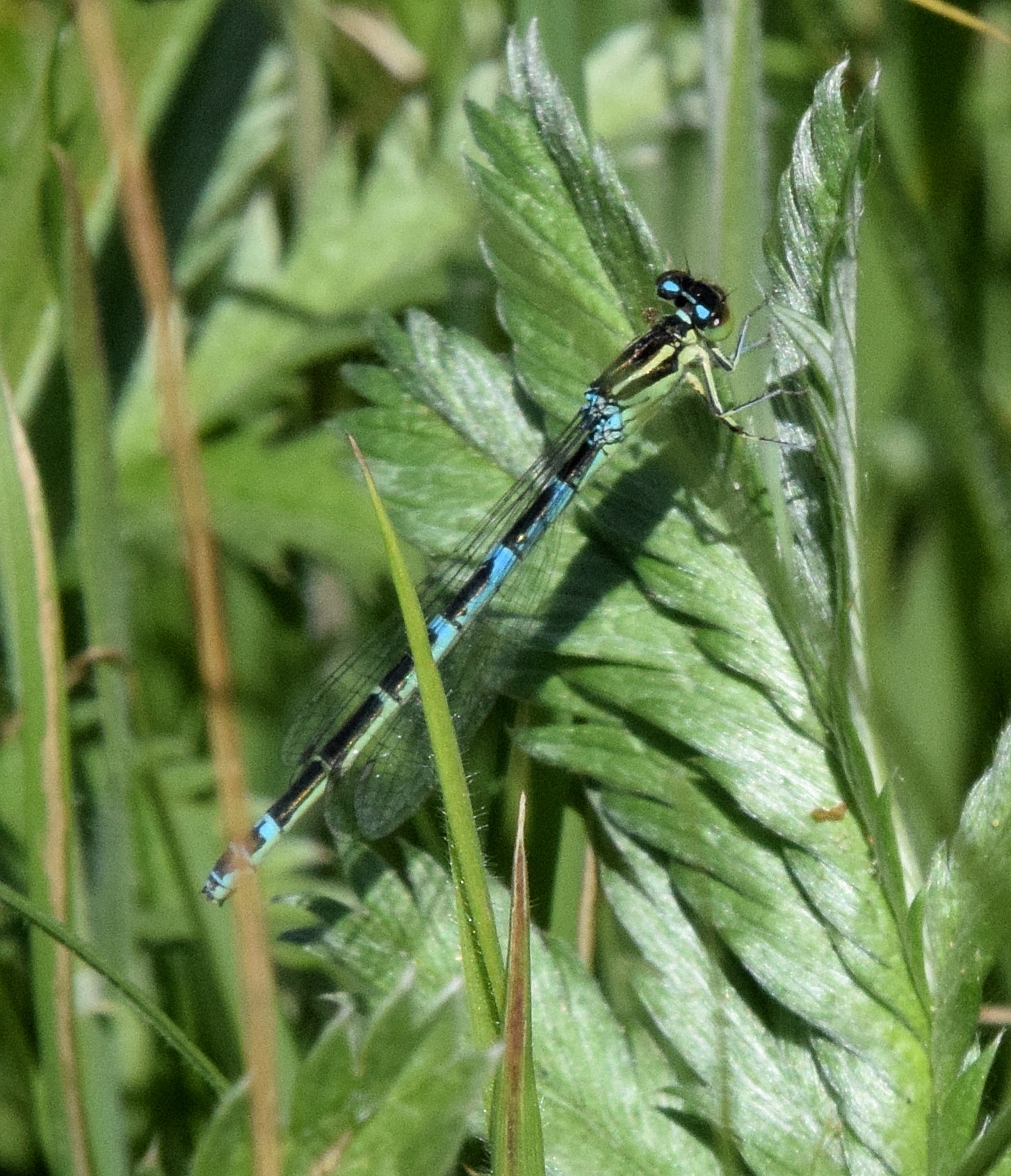
Male (left and centre) and female (right) Dainty Damselflies (above), with (below from left) Azure, Variable and Common Blue for comparison
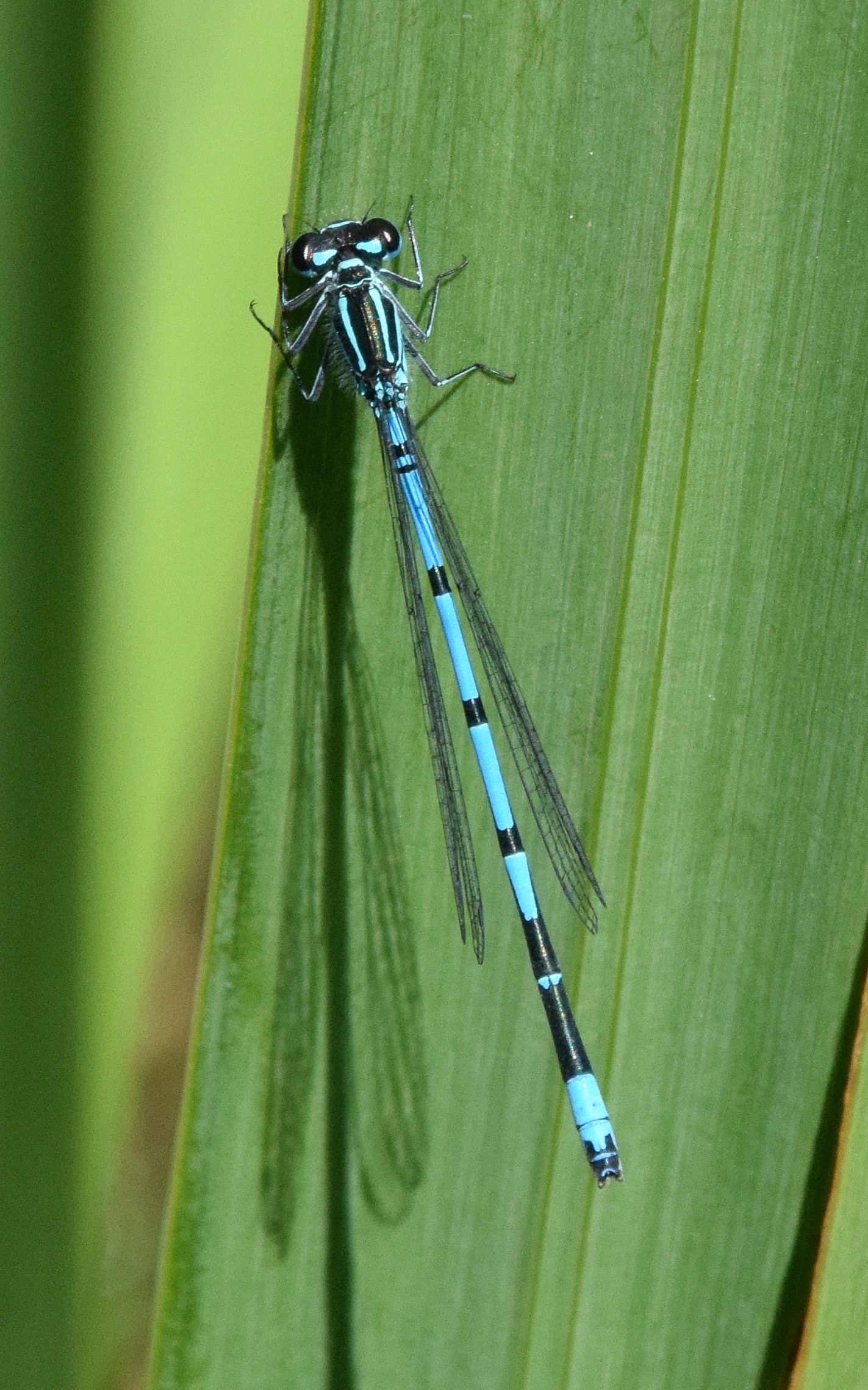
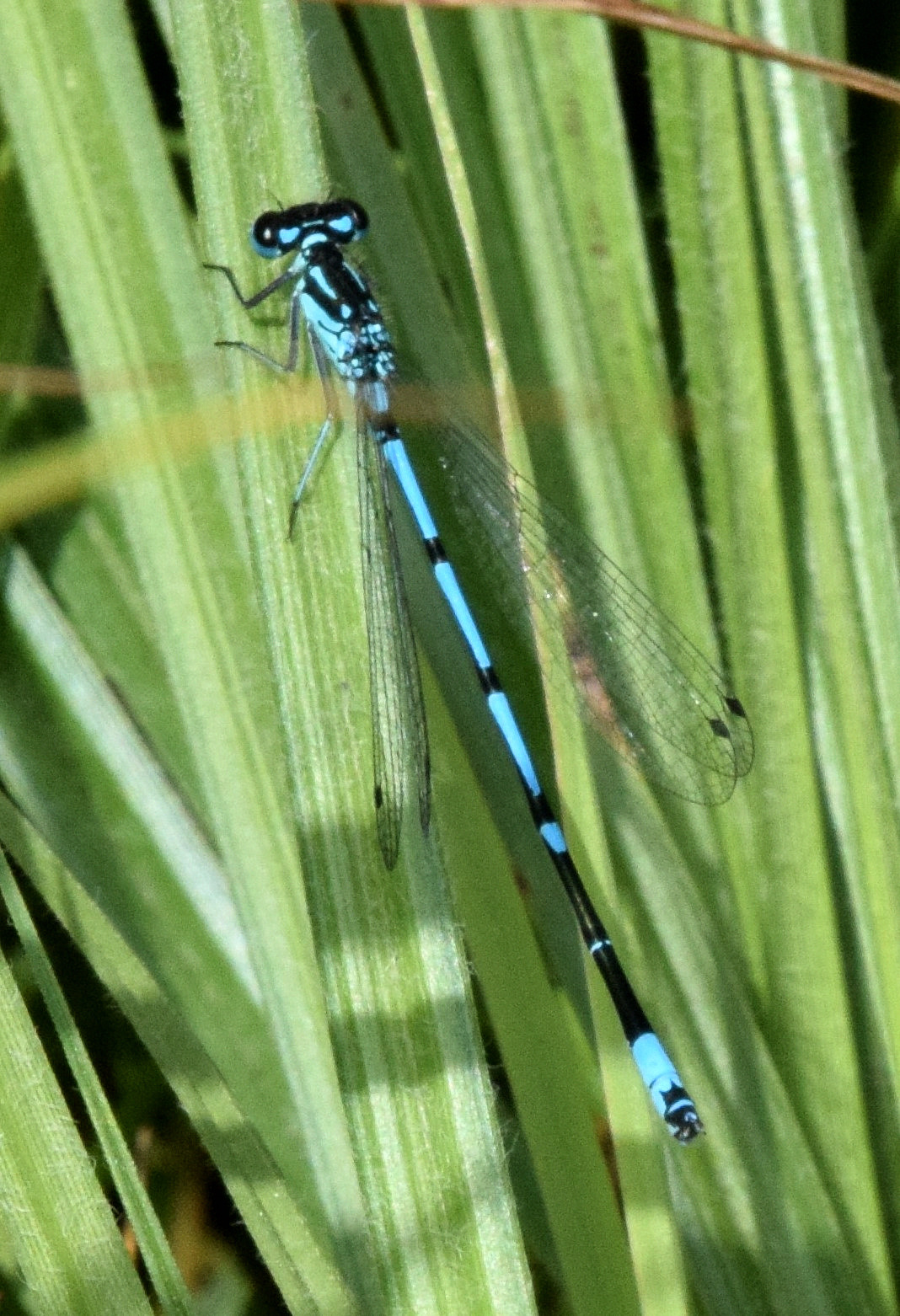
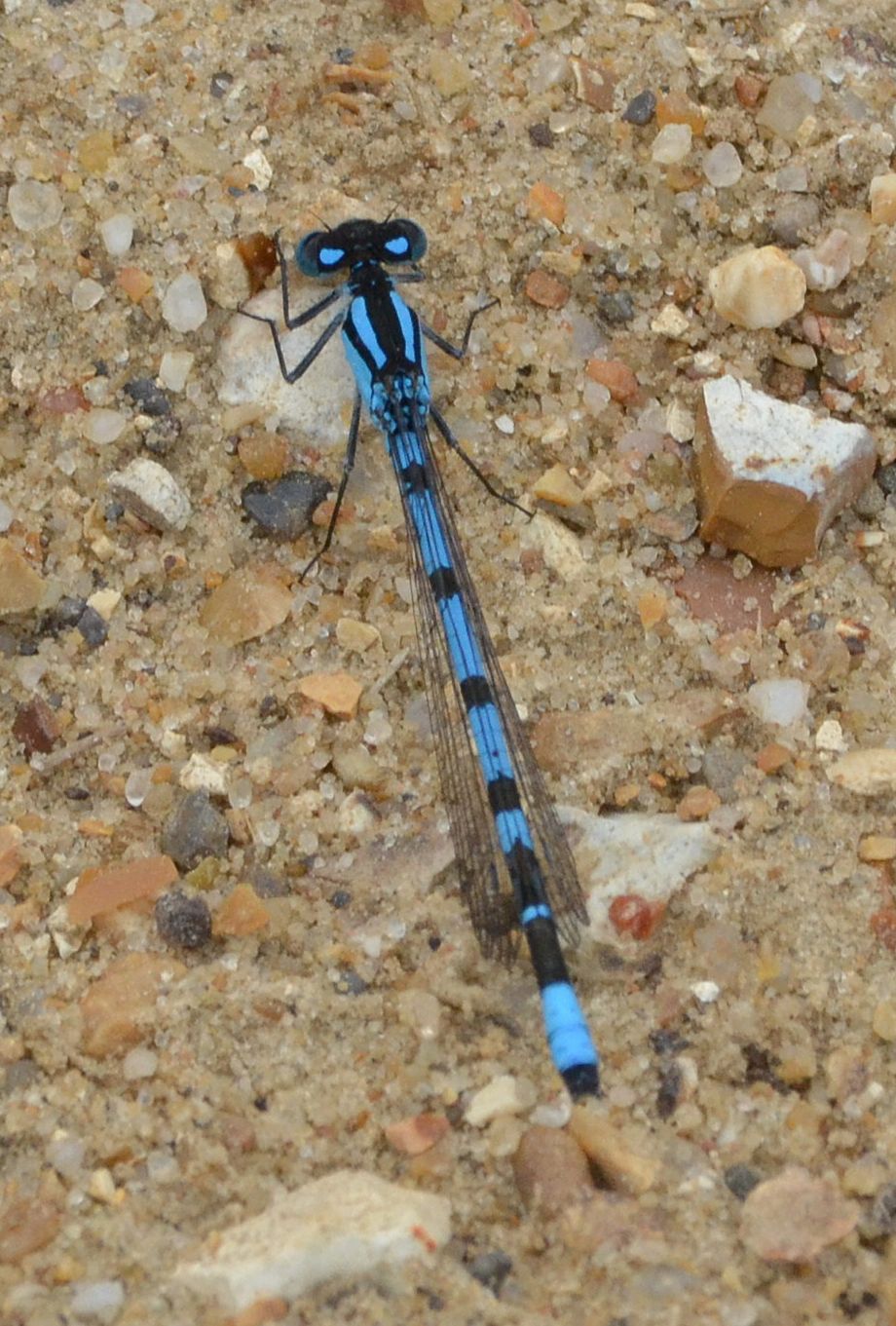
When we reached the pond of Dainty Dragonfly renown, two lingerers from the morning meeting were present and something-teen mating pairs, albeit directly into sunlight of the insects themselves (see here for Adam’s pictures). But good images of uncoupled males were obtainable in long grass away from the water’s edge, this post’s lead one being my best. The two and a half brown segments 5, 6 and 7 on the abdomen are the easiest way to recognise them in the field before back of camera pictures might confirm the already quoted diagnostics. I also now gained new studies of Azure and Variable subjects for comparison, and have included an archive Common Blue in the sequence (above).
Our early arrival had clearly been opportune in providing these picture opportunities ahead of the afternoon’s further participants joining in. This is the pool where the new coloniser was first found five years ago, and they are now far and away its most plentiful damselfly despite their national rarity, this habitat being managed to meet their specific requirements. Two more pools have just been created nearby. The warden told us Lesser Emperor, Red-veined Darter, and Scarce and Southern Emerald damselflies currently breed on other parts of the Sandwich Bay estate, though not all in publicly accessible areas. More potential colonisers are said to be not too far distant along the Normandy coast.
European Marsh Frog (see here) was introduced to Kent at Romney Marsh in the 1930s and has since spread throughout much of this and into neighbouring counties, typically inhabiting drainage ditches and shallow pools. I had therefore hoped the non-native species would be present today and indeed there were some in the Dainty Damselfly pond. The largest of the triple water frog group, these lack the green dorsal stripe of the Pool Frogs observed at Greenham Common earlier this season (see here). For me the stand-out feature was their rounded, bright green snouts, while the air sacs below the eyes were also quite distinctive. The dark stripe atop the specimen in the above study is in fact the shadow of an overhead stem.
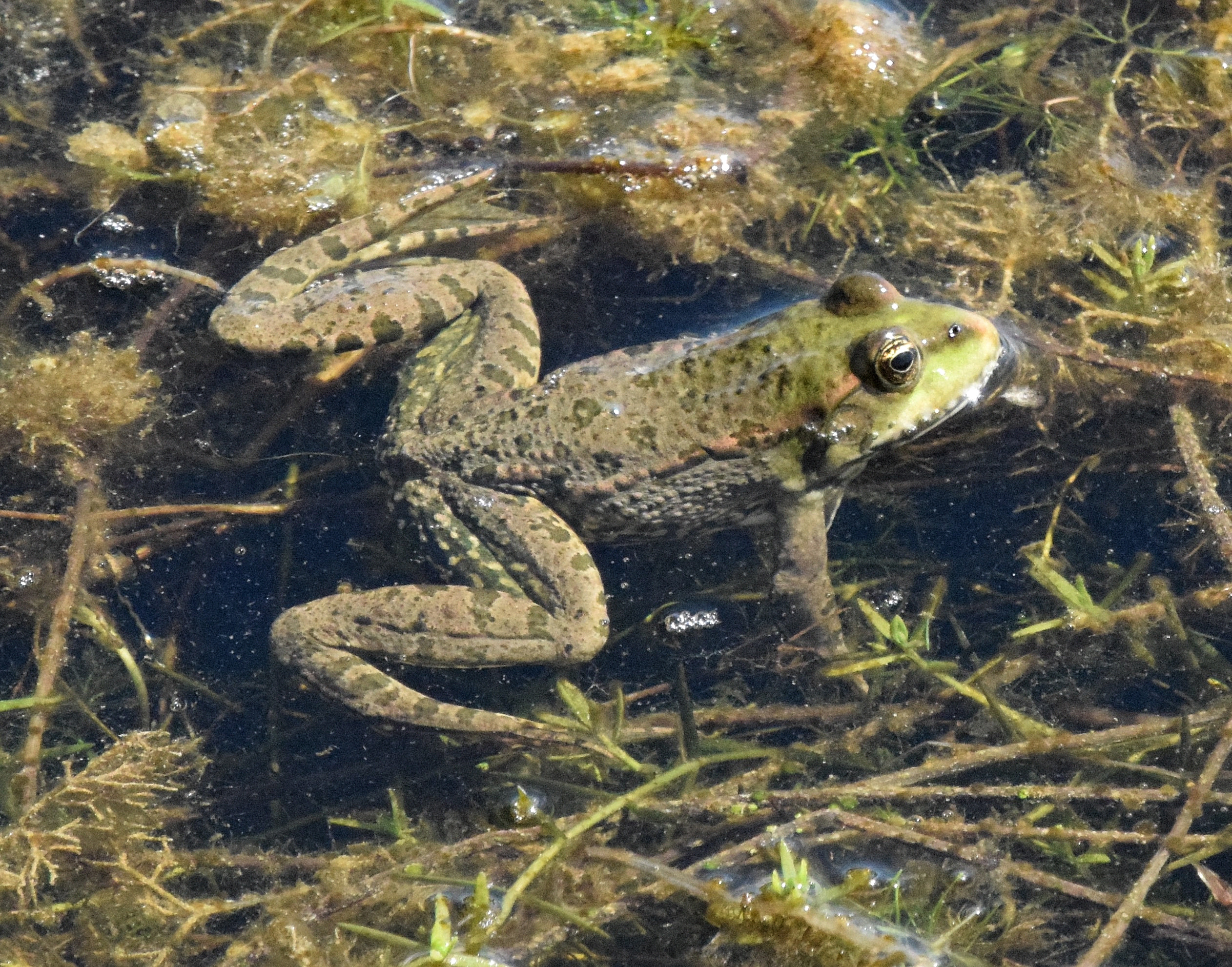
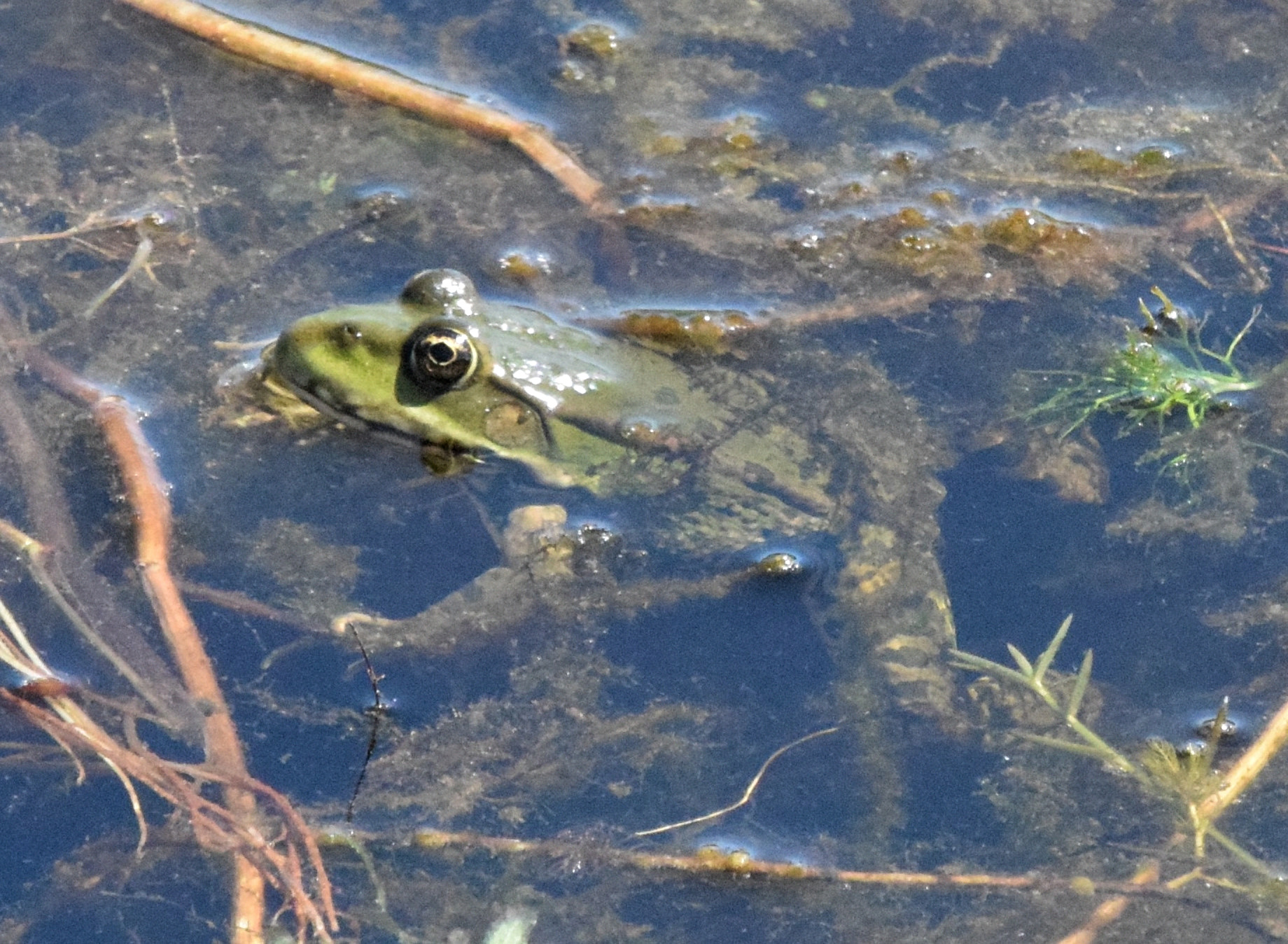
Before visiting the pool we followed a public right of way opposite the observatory entrance into coastal dunes and the Royal St George’s golf course. I was hoping for a better Lizard Orchid experience than the relative disappointment of Berrow Dunes, Somerset a week earlier (see previous post). This below is the sort of thing I had hoped to witness then. Here there were significant numbers of the plants swaying in the wind amongst long grass on and around the dune ridges. Some of them were huge, all of them weird, providing my third such encounter of this summer.
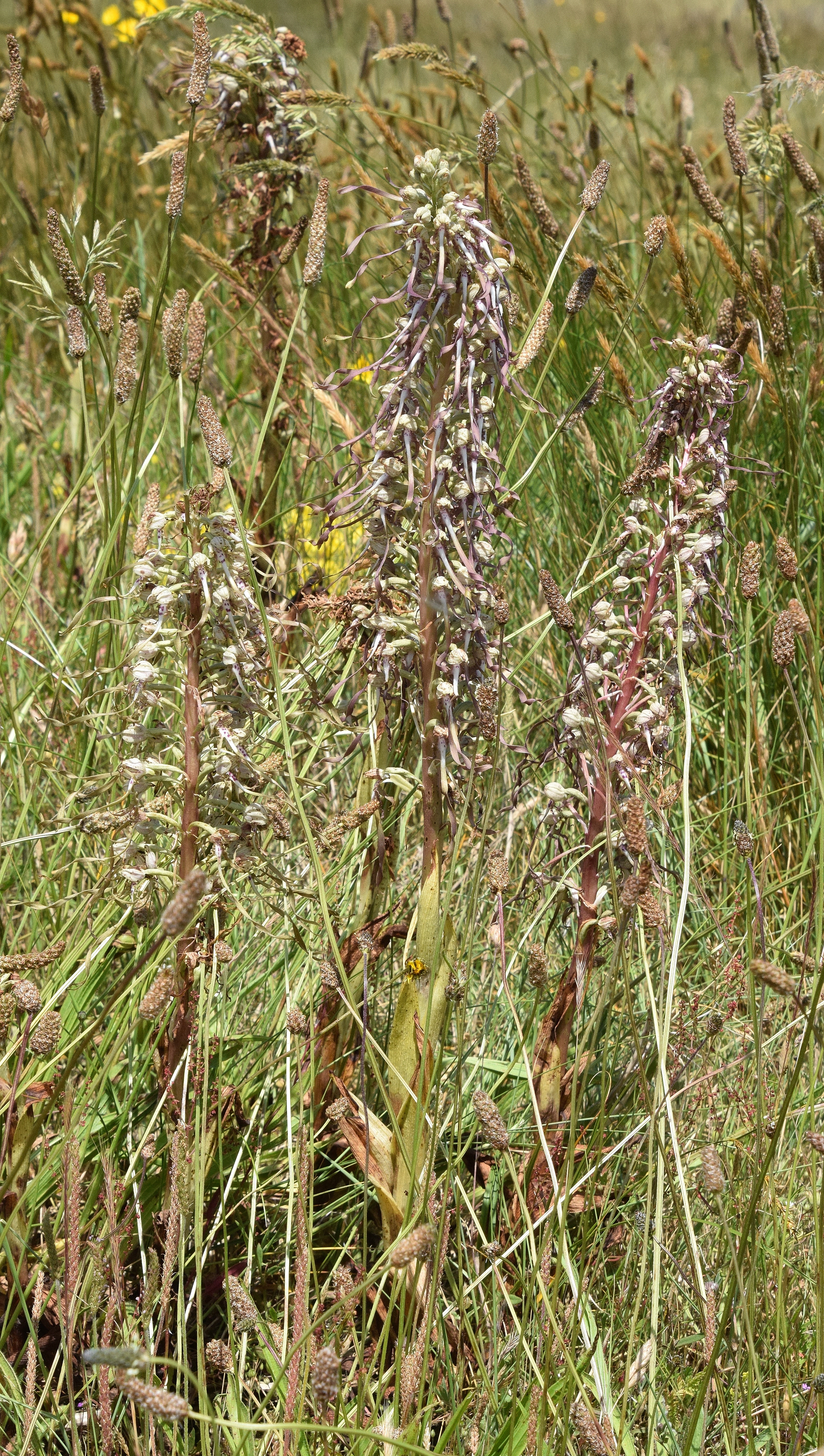
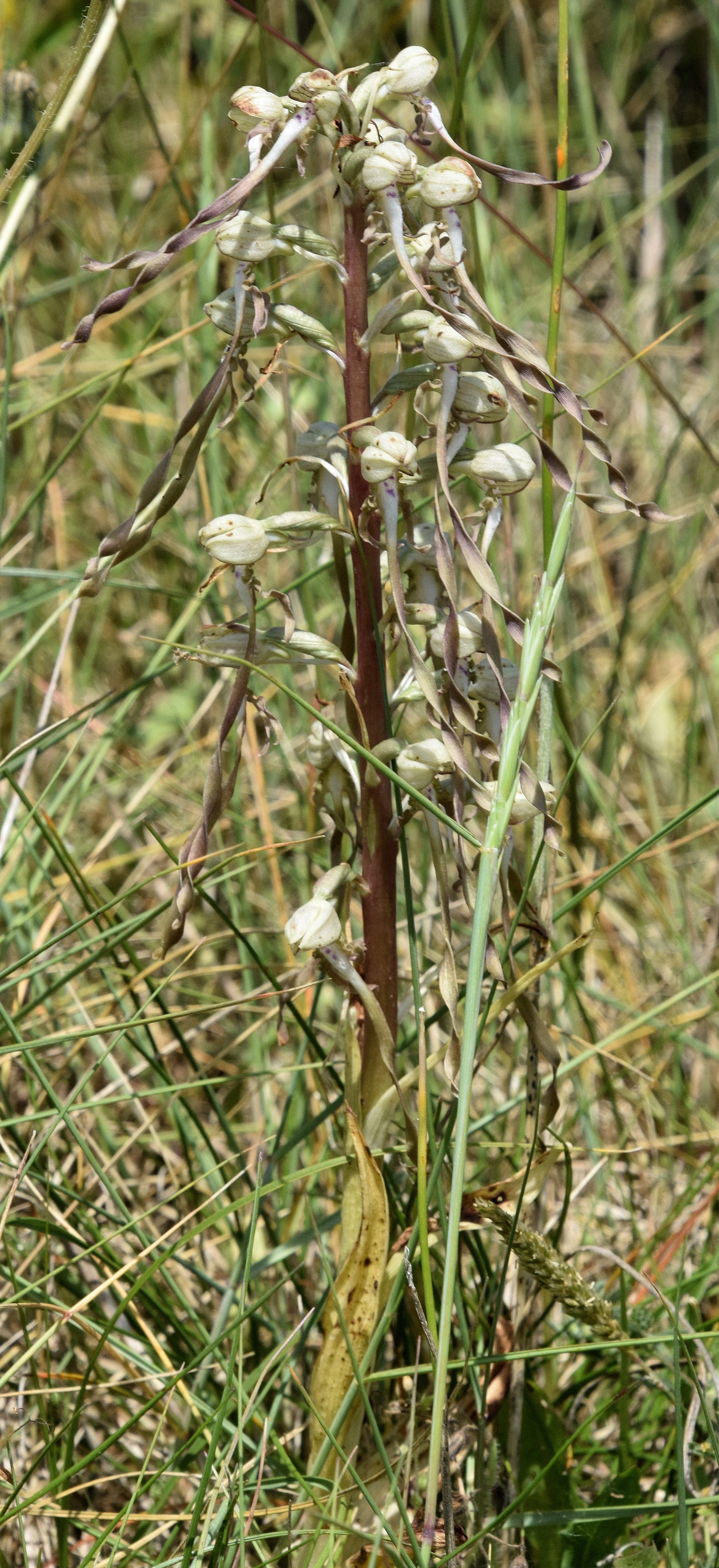
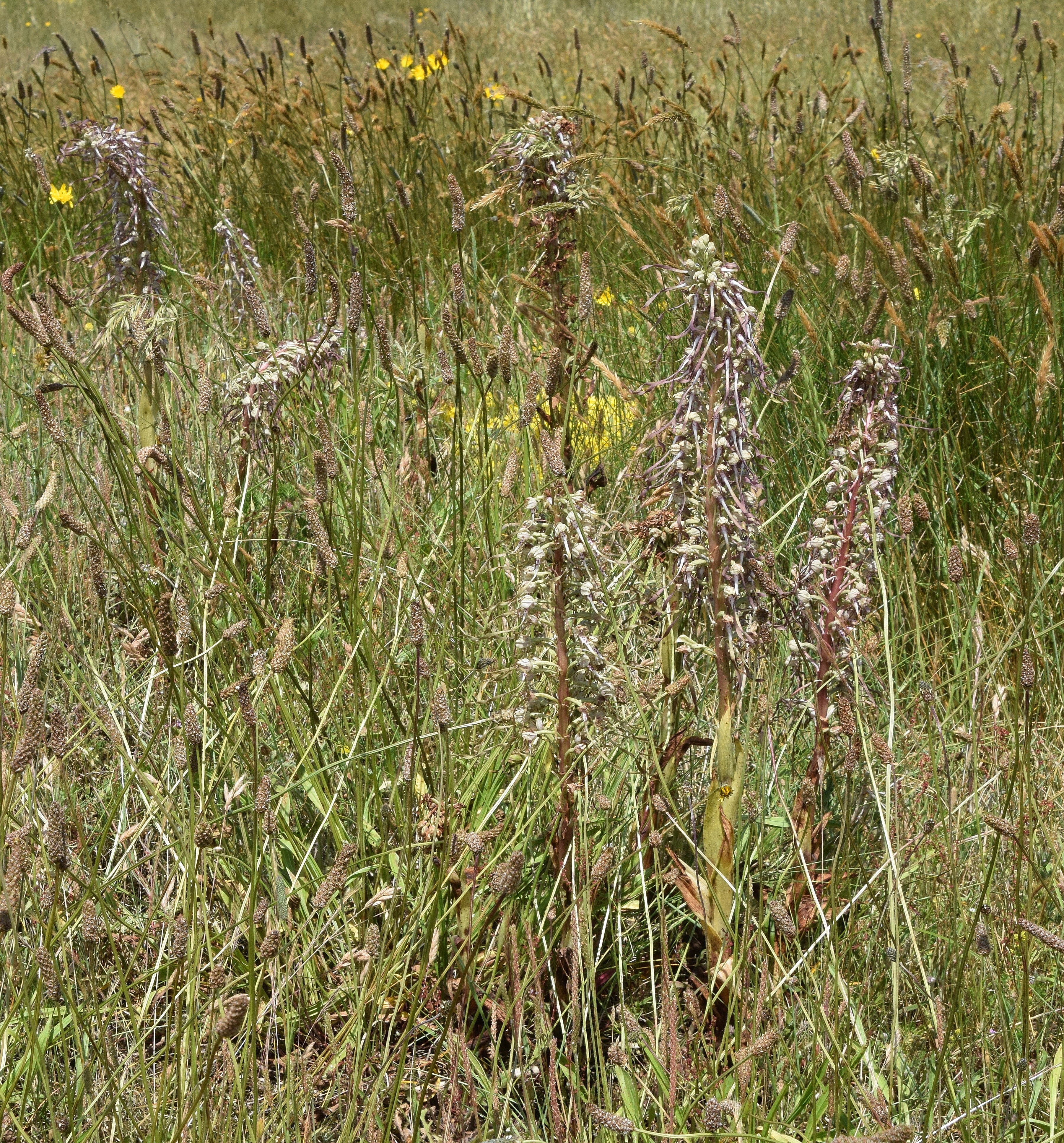
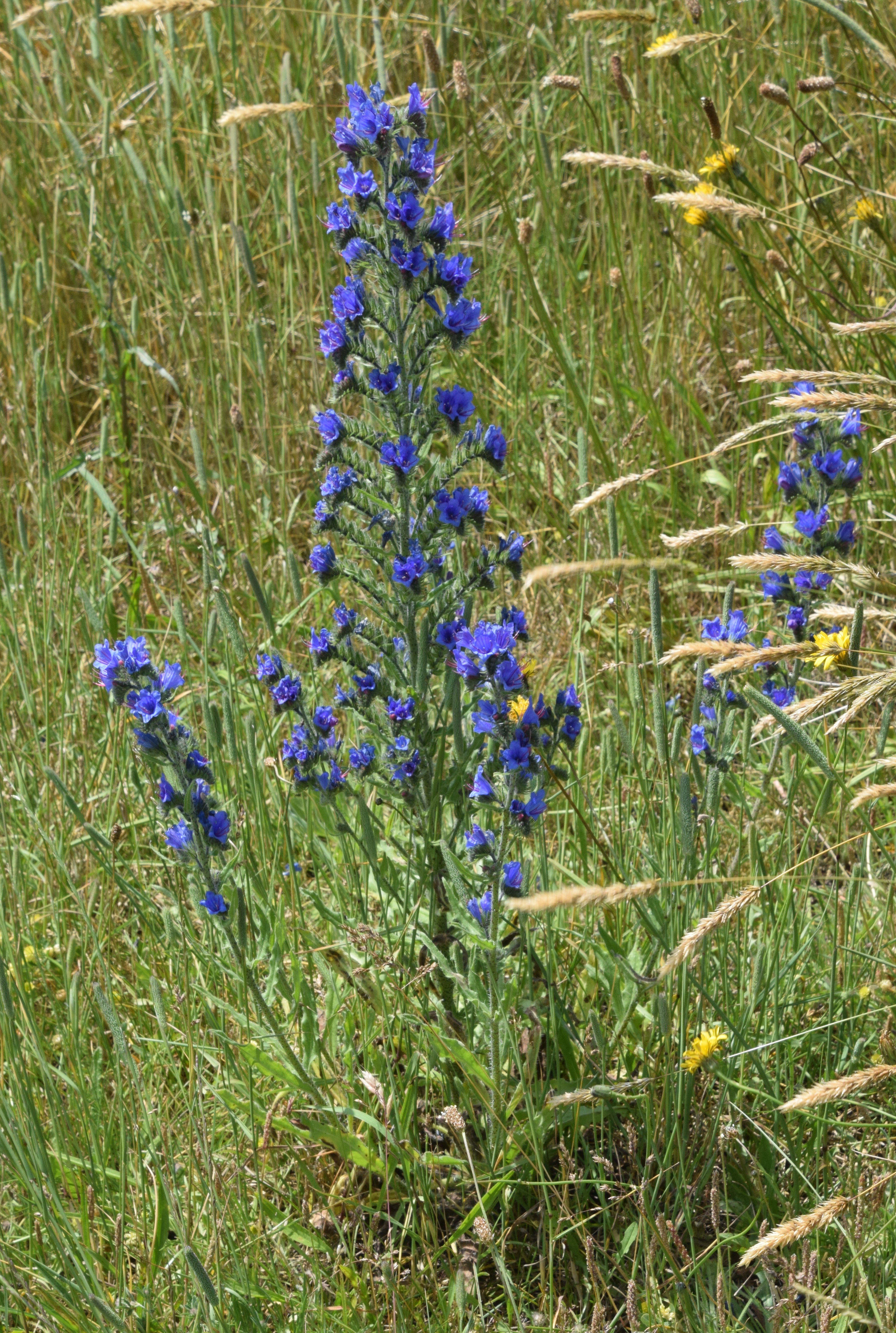
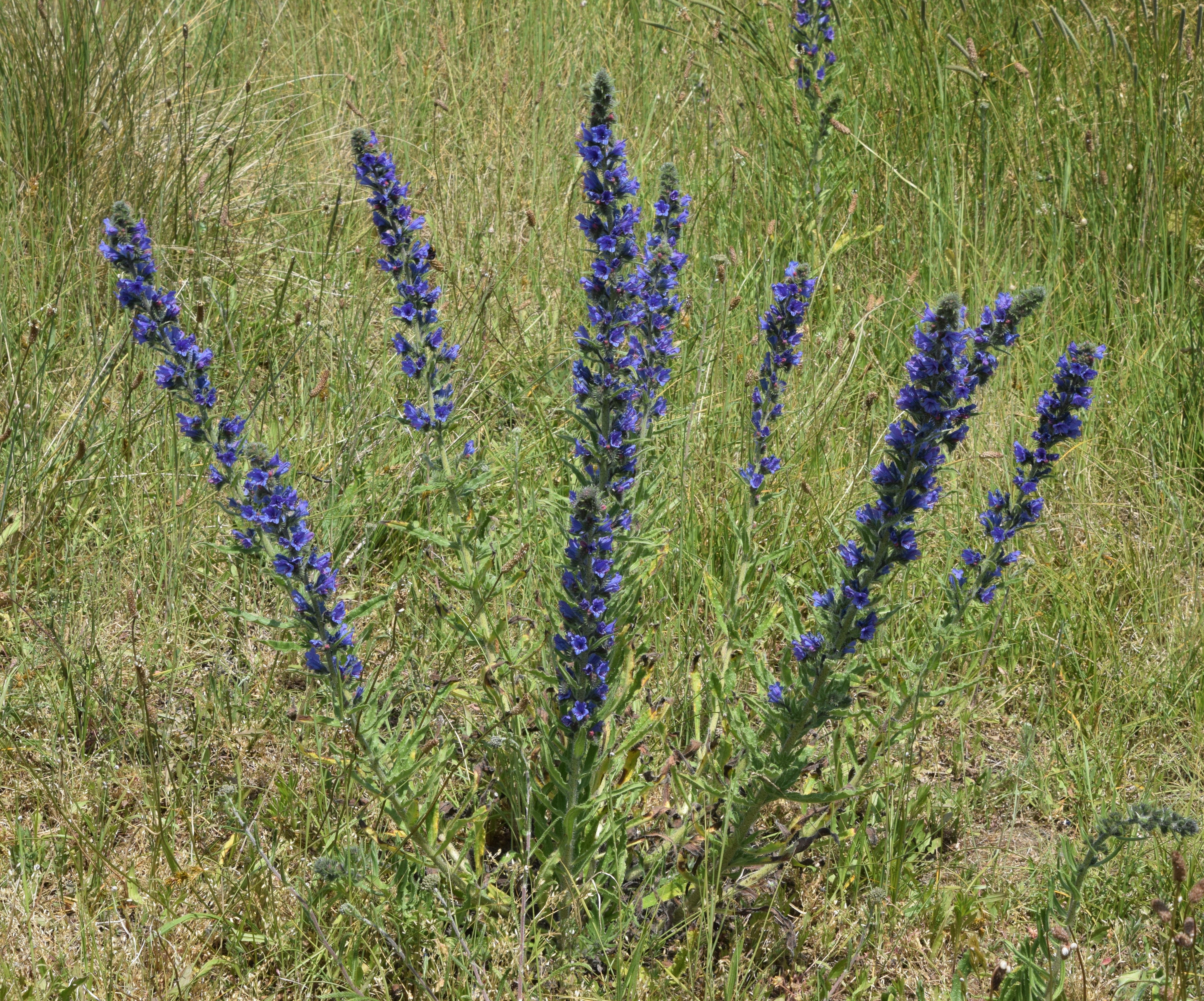
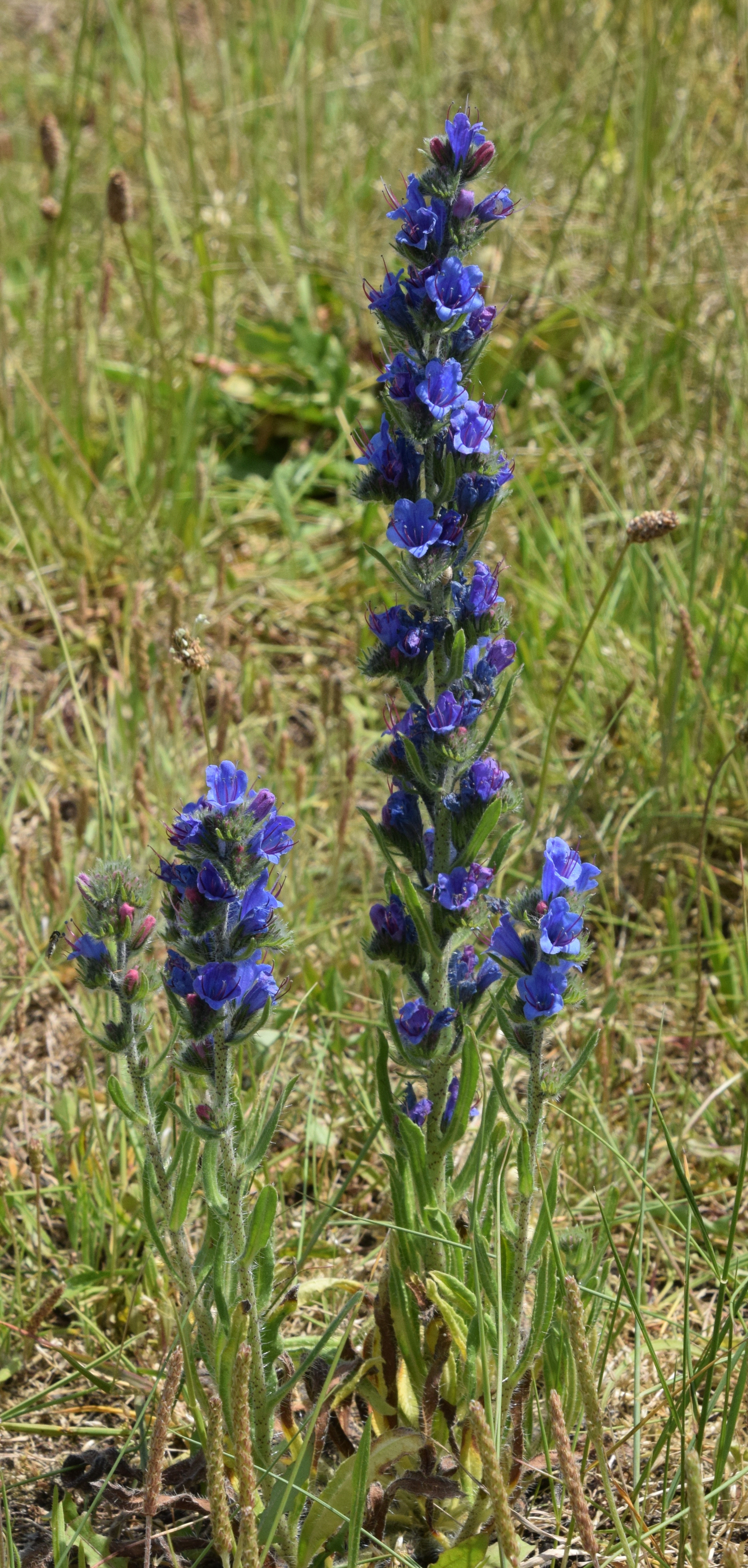
Viper’s Bugloss
An equally prominent plant here, dominating the botanical high ground in tandem with the less conspicuous Lizard Orchids was Viper’s Bugloss, a hairy, blue-flowered, stately biennial of sand dunes, chalk grassland and construction sites that has a scattered British and mainly southern distribution. The juxtaposed spectacle across the dune-scape of their vibrant blue patches with the subtly skulking Lizard Orchids completed a superb and varied wildlife triple bill within the Kentish coast’s increasingly apparent and ever open Odonata gateway.

